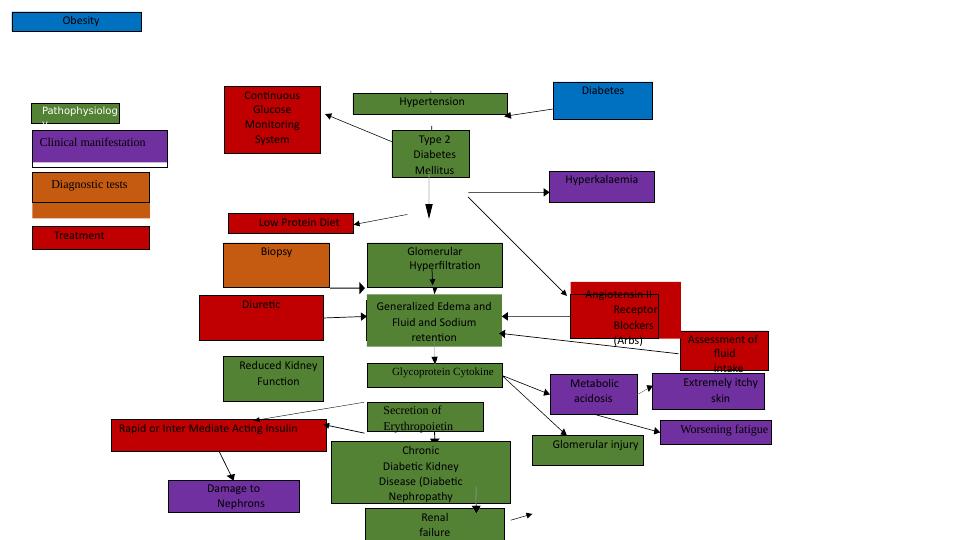Pathophysiology of Obesity and Diabetic Kidney Disease
3 Pages1605 Words40 Views
Added on 2023-01-19
About This Document
This presentation delves into the pathophysiology of obesity and its connection to diabetic kidney disease. It discusses the risk factors, clinical manifestations, diagnostic tests, and treatment options for this condition. The presentation also highlights the importance of continuous glucose monitoring systems and non-pharmacological treatments in managing the disease. References to relevant studies and research are provided throughout the presentation.
Pathophysiology of Obesity and Diabetic Kidney Disease
Added on 2023-01-19
ShareRelated Documents
End of preview
Want to access all the pages? Upload your documents or become a member.
Chronic Kidney Disease and Diabetic Nephropathy
|10
|1365
|80
Chronic Kidney Disease: Case Study and Discussion
|5
|1570
|166
Chronic Kidney Disease Assignment 2022
|7
|1598
|16
Risk factors and etiology of the patient Case Study 2022
|7
|1770
|16
Wtitten project - concept map
|1
|315
|84
Disease Pathophysiology and Concept Map
|9
|2013
|309

